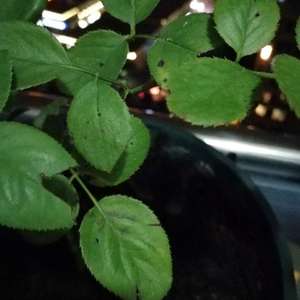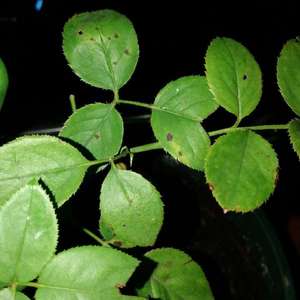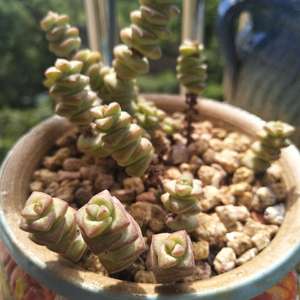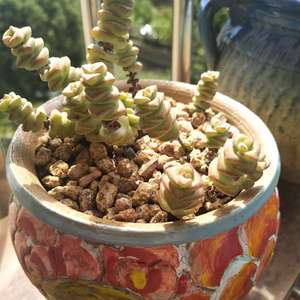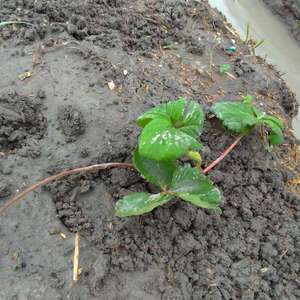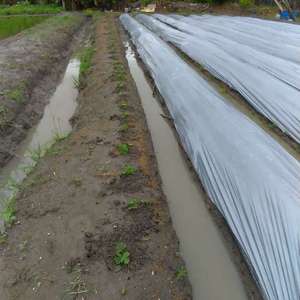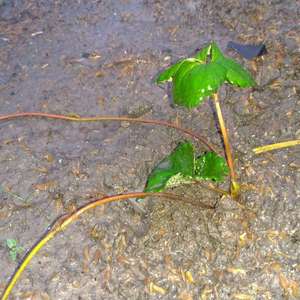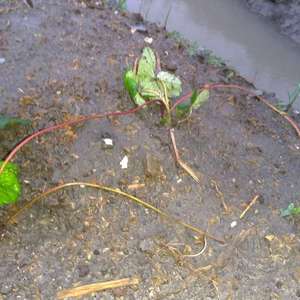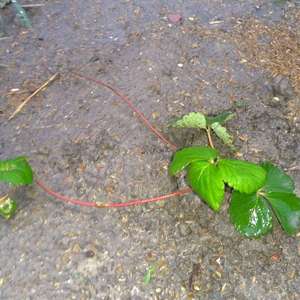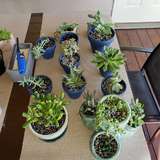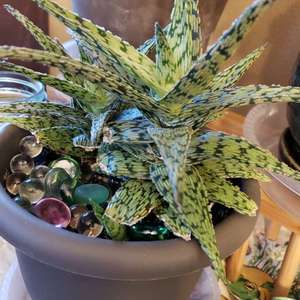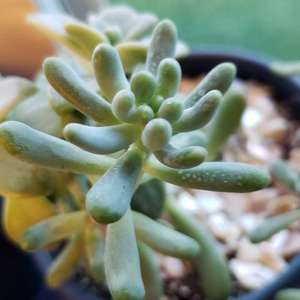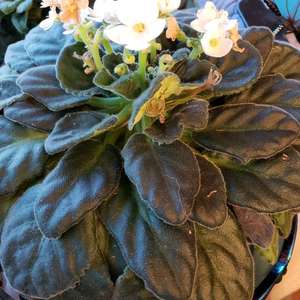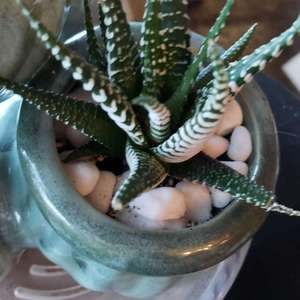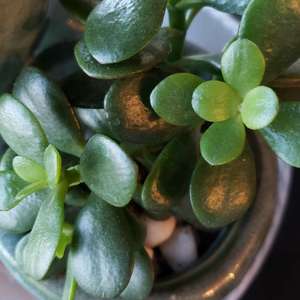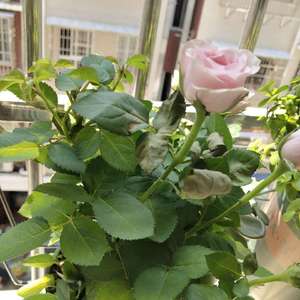文章
权问薇
2018年08月31日

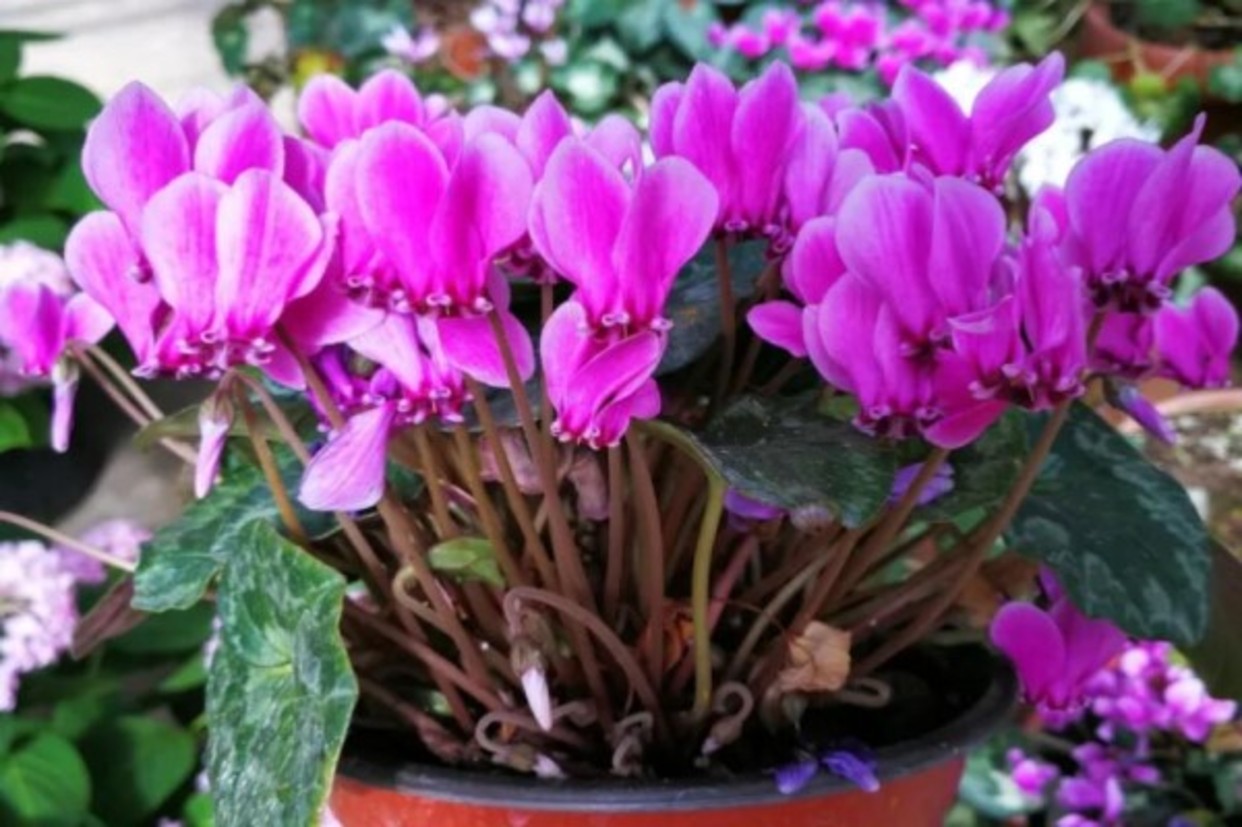
仙客来如何休眠度夏?
仙客来属于喜欢阴凉的花,夏天的高温对它一点也不友好,稍微不小心就会造成死亡,所以在天气超级热之前,一定得提前做好度夏准备!

度夏方法:
1、修剪叶片
当室外温度超过20℃的时候,仙客来的叶片开始发黄,开花量也在逐渐减少,此时要对仙客来进行修剪,将那些发黄的叶片剪掉,大概去掉叶片的1/3即可。如果修剪后花梗容易倒伏,就找绳子稍微固定一下。
2、再次修剪
当室外温度达到25℃的时候,要对仙客来进行二次修剪,将没开完的花朵和叶片继续修剪大概1/2,等温度达到30℃的时候,将仙客来花朵全剪掉,叶片只留下2-3片叶子即可。
3、休眠期养护
将修剪后的仙客来放到阴凉通风的地方,北阳台或是室内通风处,不要太阳直射。休眠期避免淋雨,同时浇水量一定要减少,可采用浸盆法浇水,避免球茎积水烂根。
4、重新生长
休眠期可以观察叶片情况,若是仙客来剩下的2-3片叶子也发黄,那就剪到只剩1片叶子。保留1片叶子,会让仙客来在秋天苏醒早,甚至比那些剪秃的要早苏醒1个月,这样养分积累多,冬天开花也就变多了!
风信子如何休眠度夏?
现在不少花友家的风信子都开败了,甚至连绿色的叶子都干枯了,这就是要休眠了!

度夏方法:
1、剪掉花箭
如果是土培的风信子,开花后将花箭剪掉,大概从花箭一半以上的位置开始剪掉,然后加点磷钾肥,让叶片继续生长,为种球继续养分。
2、种球挖出来
随着气温升高,风信子的叶片会不断枯萎,此时停水10-15天,等到叶子全都枯黄后,将种球挖出来,将花茎和发黄的叶片、根系剪掉,然后在多菌灵溶液中浸泡40分钟左右。
3、找一个干燥的塑料袋,将晾干的风信子种球放进去,不要封口,然后放在阴凉通风的地方,比如冰箱的冷藏室就可以。为了防止潮湿,还可以加入锯末。大概2-3个月就够了。
4、等到10月份的时候,将风信子从冰箱拿出来,重新种植即可,这样就可以让风信子复花了。
倒挂金钟如何休眠度夏?
虽然倒挂金钟开花好看,而且很容易爆盆,但是天气一热基本就撑不住了。不少花友纷纷跟花花说,家里的倒挂金钟都挂了好几盆了
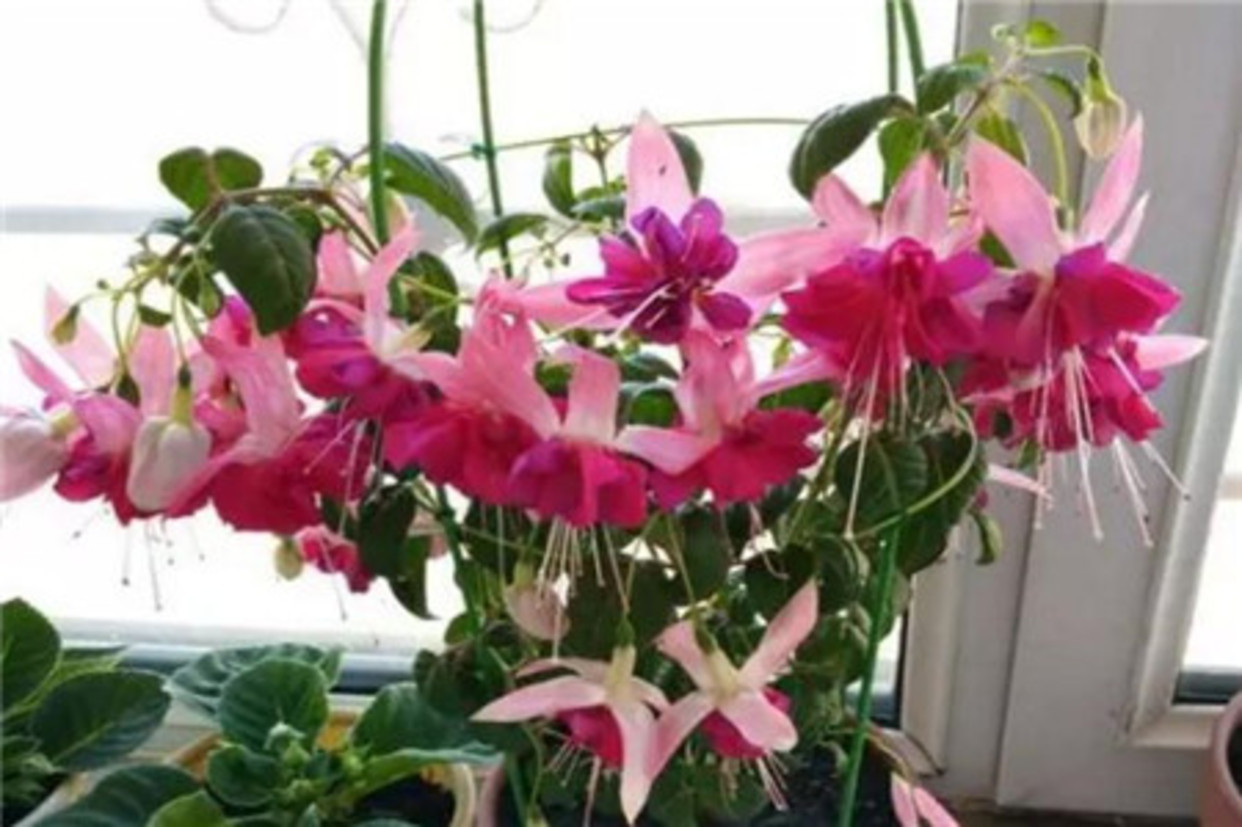
度夏方法:
1、修剪枝条
倒挂金钟特别怕热,随着夏季温度逐渐增高,特别是30℃以后,基本上就开始休眠了。此时可以将枝条剪短,从枝条上6个芽点向上全都剪掉。
2、减少浇水
将倒挂金钟放到北边阳台或窗台上,避免太阳直射,避免雨淋,同时减少浇水,保证盆土略微干燥。
3、停止施肥
25℃以上停止施肥。因为施肥会导致新枝徒长,进而造成度夏难的现象。
4、扦插小苗
虽然倒挂金钟不容易度夏,但是刚刚扦插的小苗却比较耐高温,所以在度夏之前,可以用枝条扦插小苗,避免母株因为度夏不成功死掉。
长寿花如何休眠度夏?
从过年开始,长寿花就一茬茬开花不断,如今天气热了终于要进入休眠期了。

度夏方法:
1、避免直射
温度一超过30℃,长寿花就开始进入休眠期了,此时可以将长寿花放在光线明亮的客厅、北阳台等通风好的地方,避免直射太阳。
2、减少浇水
进入休眠期的长寿花生长缓慢或停滞,浇水一定要减少。平常摸到距离盆土表面2-3cm的土壤干透了后再浇水,盆内千万别积水。休眠期停止施肥。
蟹爪兰如何休眠度夏?
跟长寿花一样,一到天气炎热的时候,蟹爪兰也要开始进入休眠期了。

度夏方法:
1、注意修剪
为了防止蟹爪兰度夏死掉,一定要在度夏前进行修剪,将那些密不透风的枝条剪掉,让蟹爪兰整个整株都透风。
2、遮阴通风
将蟹爪兰放在北阳台或室内通风处,如果放在东、西阳台,一定要注意遮阴,避免太阳直射。
3、减少浇水
蟹爪兰休眠期,注意保证盆土表面干燥,大概半个月浇1次水。注意千万别淋雨,如果温度特别高,一定要注意在花盆周围喷水。
多肉如何休眠度夏?
对于那些冬型种的多肉来说,一到夏天就进入了休眠状态,基本上不再长个了。

度夏方法:
1、注意遮阴
像是黑法师、月兔耳、山地玫瑰…一到夏天都会进入休眠期,此时必须要注意遮阴,将多肉放在阴凉通风的地方养护。
2、减少浇水
为了防止多肉休眠期积水死亡,必须要减少浇水量,让盆土处在略微干燥的状态,大概10-15天浇1次水即可。
天竺葵如何休眠度夏?
家里的温度持续在30℃的时候,家里的天竺葵就到了要休眠的时候了,此时各位花友一定得注意了!

度夏方法:
1、保证干燥
保证盆土表面处于干燥的状态,浇水的时候,从盆沿慢慢浇下去,千万不能饿沾到叶片和茎干上。
2、停止操作
从5月开始,像是什么换盆、重剪或是整形修剪枝条之类的操作,全部停止,不要再操作了。
3、夏季不休眠的补充肥料
大花天竺葵和天使品种夏季不会因为炎热休眠,对于这种夏季疯长的花来说,必须要给予稀释的肥料,促使天竺葵开花更多。
花花今天就介绍到这里了。
各位花友一定要重视起来哦,
不然家里的花死翘翘了,
可就特别心疼了!
0
0
文章
Miss Chen
2018年08月30日

A miniature daylily with enormous ornamental punch, "Stella de Oro" (Hemerocallis "Stella de Oro") packs an abundance of riches onto its 1-foot high frame. In U.S. Department of Agriculture plant hardiness zones 3 through 10, its buttery-gold, ruffled trumpet flowers open from late spring to late summer. In mild-winter areas, its gracefully arching foliage remains green all year. Plant it properly, and one "Stella de Oro" may eventually produce 400 blooms in a single growing season.

When to Plant
Climate dictates the best time of year to plant bare-root "Stella de Oro." In hot-summer, mild-winter climates where the soil doesn't freeze, fall planting lets them establish and leaf out before extremely hot temperatures arrive.
In cold-winter climates, plant bare-root "Stella de Oro" in spring at least 60 days before summer temperatures are likely to peak. Planting in fall increases the chances of the roots' not establishing before the ground freezes.
As long as their root balls aren't disturbed, nursery container plants can go in the ground whenever the soil is workable.
Where to Plant
For maximum flowering, "Stella de Oro" needs at least six hours of daily sun. In most cases, plants in direct afternoon sun produce more flowers than those getting mostly morning sun. The exceptions are plants in very hot summer climates, and -- in some instances -- those planted in the shade of light-colored buildings.
Give hot-climate plants full morning sun, with shade between noon and late afternoon. Indirect, reflected light may be enough for the building-shaded plants to bloom their best; if it's not, they're easily transplanted. "Stella d'Oro" rarely flowers in deep shade.
Never plant "Stella de Oro" where its toxic leaves might tempt the family cat.
Site Preparation
Prepare a site large enough to space the "Stella de Oro" daylilies 1 to 1 1/2 feet apart.
Loosen the top 1 to 1 1/2 feet of the planting bed with a spade or tiller and work in a 3- to 4-inch layer of an organic soil amendment, such as well-aged compost or manure.

Also work in a granulated fertilizer with a 3:1:2 ratio of nitrogen, phosphorous and potash, as indicated by the N-P-K numbers on the label. One manufacturer, for example, recommends lightly scratching 1 1/4 cups of its 6-2-4 fertilizer granules into each 10 square feet of soil and watering well.
Follow your fertilizer label's application instructions, because brands vary according to formula.
Planting Methods
If the bare-root plants' roots are dry, submerge them in water for one or two hours before planting. Water a dry potted "Stella de Oro" until liquid runs from its drainage holes.
Cut bare-root plants' leaf fans back to 6 to 8 inches above the roots, trimming the tops into inverted "Vs." Use clean, sharp scissors disinfected between cuts in rubbing alcohol.
Dig holes wide enough for the roots. In a cold-winter climate, dig deeply enough for roots' tops to sit 1 inch below the soil line; elsewhere 1/2 inch is acceptable.
Hold a bare-root plant upright, center it in a hole and backfill with loose soil. Hold a container plant by its base, invert the container and slowly slide it free. Shake the rootball gently and trim damaged or encircling rots with sharp, disinfected stem cutters. Spread the roots, center it in a hole and backfill.
Tamp the soil lightly to eliminate air pockets. Water the transplants deeply enough to soak the roots, and cover the planting bed with a 2- to 3-inch layer of moisture-retaining organic mulch.
Watering After Planting
To establish quickly and perform well, "Stella de Oro" needs 1 inch of weekly rain or supplemental water, or about 6 gallons per 10 square feet of soil.
When the top 2 to 4 inches of soil feel dry or are too compacted to dig easily, water slowly so that the moisture sinks to the roots. For plants in loamy or clay soil, one weekly watering is generally enough. In sandy soil, water twice weekly with one-half the required amount.

When to Plant
Climate dictates the best time of year to plant bare-root "Stella de Oro." In hot-summer, mild-winter climates where the soil doesn't freeze, fall planting lets them establish and leaf out before extremely hot temperatures arrive.
In cold-winter climates, plant bare-root "Stella de Oro" in spring at least 60 days before summer temperatures are likely to peak. Planting in fall increases the chances of the roots' not establishing before the ground freezes.
As long as their root balls aren't disturbed, nursery container plants can go in the ground whenever the soil is workable.
Where to Plant
For maximum flowering, "Stella de Oro" needs at least six hours of daily sun. In most cases, plants in direct afternoon sun produce more flowers than those getting mostly morning sun. The exceptions are plants in very hot summer climates, and -- in some instances -- those planted in the shade of light-colored buildings.
Give hot-climate plants full morning sun, with shade between noon and late afternoon. Indirect, reflected light may be enough for the building-shaded plants to bloom their best; if it's not, they're easily transplanted. "Stella d'Oro" rarely flowers in deep shade.
Never plant "Stella de Oro" where its toxic leaves might tempt the family cat.
Site Preparation
Prepare a site large enough to space the "Stella de Oro" daylilies 1 to 1 1/2 feet apart.
Loosen the top 1 to 1 1/2 feet of the planting bed with a spade or tiller and work in a 3- to 4-inch layer of an organic soil amendment, such as well-aged compost or manure.

Also work in a granulated fertilizer with a 3:1:2 ratio of nitrogen, phosphorous and potash, as indicated by the N-P-K numbers on the label. One manufacturer, for example, recommends lightly scratching 1 1/4 cups of its 6-2-4 fertilizer granules into each 10 square feet of soil and watering well.
Follow your fertilizer label's application instructions, because brands vary according to formula.
Planting Methods
If the bare-root plants' roots are dry, submerge them in water for one or two hours before planting. Water a dry potted "Stella de Oro" until liquid runs from its drainage holes.
Cut bare-root plants' leaf fans back to 6 to 8 inches above the roots, trimming the tops into inverted "Vs." Use clean, sharp scissors disinfected between cuts in rubbing alcohol.
Dig holes wide enough for the roots. In a cold-winter climate, dig deeply enough for roots' tops to sit 1 inch below the soil line; elsewhere 1/2 inch is acceptable.
Hold a bare-root plant upright, center it in a hole and backfill with loose soil. Hold a container plant by its base, invert the container and slowly slide it free. Shake the rootball gently and trim damaged or encircling rots with sharp, disinfected stem cutters. Spread the roots, center it in a hole and backfill.
Tamp the soil lightly to eliminate air pockets. Water the transplants deeply enough to soak the roots, and cover the planting bed with a 2- to 3-inch layer of moisture-retaining organic mulch.
Watering After Planting
To establish quickly and perform well, "Stella de Oro" needs 1 inch of weekly rain or supplemental water, or about 6 gallons per 10 square feet of soil.
When the top 2 to 4 inches of soil feel dry or are too compacted to dig easily, water slowly so that the moisture sinks to the roots. For plants in loamy or clay soil, one weekly watering is generally enough. In sandy soil, water twice weekly with one-half the required amount.
0
0




